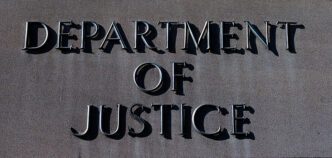The name Freddie Gray continues to evoke strong emotions in Baltimore, even a decade after the events of 2015. Those who lived or worked in the city during those turbulent weeks vividly remember the atmosphere of anger and despair, underscored by the sounds of sirens and protest chants, as well as the smell of smoke from burning neighborhoods. Yet, for newcomers to the growing city or for those too young to recall the events, the story of Freddie Gray and its enduring impact on Baltimore may be less familiar. Here is a detailed account of what transpired and key points to understand.
Freddie Gray Jr. was a 25-year-old Baltimore resident who tragically died in police custody. Known as the son of Gloria Darden and Freddie Gray Sr., he was also a brother to two sisters, including his twin, Fredericka. As children, Gray and his siblings were diagnosed with high levels of lead in their blood. This led to a lawsuit against the landlord of their rented home in the Sandtown-Winchester neighborhood, which they alleged was responsible for their educational, behavioral, and medical challenges. The lawsuit was settled, acknowledging the detrimental effects of the lead exposure.
On April 12, 2015, Gray was with friends near Gilmor Homes in West Baltimore. An encounter with a Baltimore Police officer on bicycle patrol prompted Gray to flee, initiating a pursuit. Within a minute, he surrendered to the police, who discovered an illegal switchblade knife on him during a search. This discovery, although later debated for its legality, led to Gray’s arrest. He was handcuffed and placed into a police wagon without a seatbelt.
During transport, officers made several stops after hearing Gray banging against the wagon’s sides. They placed him in leg shackles at one stop and returned him to the wagon, lying on his stomach with his hands cuffed. The van also detained another individual during its journey. By the time they reached the Western District station, Gray was unresponsive. Paramedics were summoned and found him not breathing, with blood emanating from his nose. A Department of Justice report noted that Gray incurred a fatal neck and spinal injury while in the wagon, though the exact circumstances remain uncertain.
Gray was transported to Shock Trauma, where he underwent surgery for severe neck injuries and a crushed voice box, as reported by his family. After spending five days in a coma, he passed away on April 19, a week following his arrest. His funeral on April 27 sparked widespread protests in Baltimore, escalating into violence and prompting a state of emergency declaration by then-Governor Larry Hogan, who deployed the National Guard to restore order.
While six police officers were charged with various crimes related to Gray’s death by then-Baltimore State’s Attorney Marilyn Mosby, none were convicted. The charges against them were either dropped or resulted in acquittals. The Justice Department labeled Gray’s death as “undeniably tragic” but did not pursue federal civil rights charges against the officers involved. Baltimore City ultimately settled a civil case with Gray’s family for $6.4 million in 2015.
The Bottom Line
The impact of Freddie Gray’s death and the subsequent events continue to resonate throughout Baltimore. The incident highlighted critical issues related to police practices and community relations, prompting ongoing discussions and reforms. For residents and newcomers alike, understanding these events is essential for grappling with the city’s history and fostering a more equitable future.
The unrest in 2015 underscored the community’s demand for accountability and justice, shaping public perception of law enforcement and influencing local policies. These events remain a poignant reminder of the need for systemic change in addressing social and racial inequalities and ensuring that justice is served fairly and transparently.






